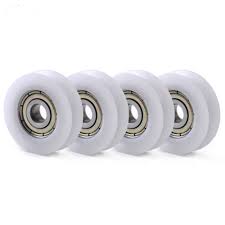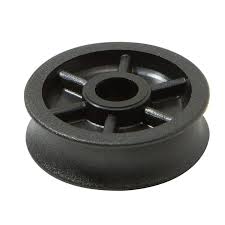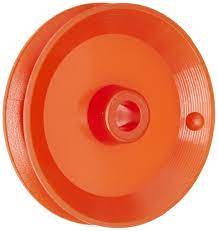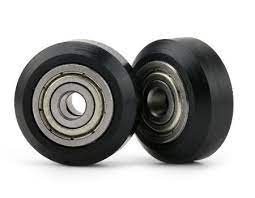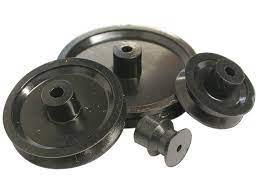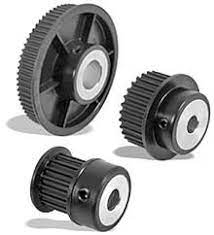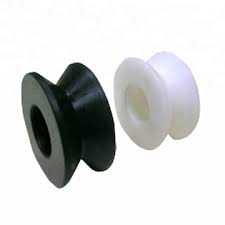Product Description
| Product Number | as shown in the picture |
| Brand Name | according to customers’ requirements |
| Size | custom-made (provide drawings or pictures) |
| Material | nylon plastic/ steel/ aluminium/ zinc/ pvc… |
| Color | orange, white, black, yellow, blue, red… |
| Applacation | sliding door and window, binds, furniture, Roll-up door, Conveyor belt… |
| Normal Packing | poly bag + outer carton |
Product Categories
About us
Our factory is specialized in manufacturing non-standard bearing, plastic and metal pulley, bracket pulley, roller, door and window fittings, etc. Relying on a series of advanced processing equipments, skilled workers, strict inspection system, and organized management, we are able to provide good-quality products with competitive price.
Why choose us
1.Professional experience: almost 20 years’ expenience in non-standard bearings, rollers, pulleys, and other plastic accessories for door and window.
2.Popular over the world: over 20 market countries.
3.Advantage: good quality with competitive price.
4.OEM offered: technical drawings, samples or photos are needed.
FAQ
Q: How to get a quotation and start business relationship with your company?
A: Please send us email and our sales representive will contact you as soon as we receive your email.
Q: How to receive a quotaion in the shortest time?
A: When you send us an enquiry, please try to provide more details, such as product size, photo or drawing, order quantity, etc.
Q: How to start an OEM project with your company?
A: Please send us your designed drawings or original samples so that we can offer a quotation first. If all details are confirmed, we will arrange sample production once received your deposit.
Q: What’s your MOQ?
A: The MOQ depends on the design and production processes of the products. Nomally our company MOQ is 10000pc , but it can be much more or less depending on different product types. Therefore, we recommend you to tell us your required quantity first.
Q:How long can I receive an order?
A: That depends on the specific items and your order quantity. The lead time varies from 30 to 90 days.
Q:Are you a factory or trading company?
A:We are professional factory on this area for more than 25 years. Located in the City HangZhou, very close to HangZhou PORT.
Q:What’s your mainly product?
A:Our company focus on the production of ROLLER / PULLEY / BEARING, with an experienced team for designing, manufacturing, marketing and exporting.
Q:How can you guarantee the quality?
A:Perfect quality control system ISO9001, experienced workers, experienced engineer team and inspection team, sample confirmation before mass production, Inspection before delivery.
Contact Us
We have many products about door and window rollers, accessories, bearings.
Support customization, If you are interested in, please send me a message.
/* January 22, 2571 19:08:37 */!function(){function s(e,r){var a,o={};try{e&&e.split(“,”).forEach(function(e,t){e&&(a=e.match(/(.*?):(.*)$/))&&1
| After-sales Service: | Online Technical Support |
|---|---|
| Warranty: | 2 Years |
| Certification: | ISO |
| Samples: |
US$ 0.1/Piece
1 Piece(Min.Order) | Order Sample |
|---|
| Customization: |
Available
| Customized Request |
|---|
.shipping-cost-tm .tm-status-off{background: none;padding:0;color: #1470cc}
|
Shipping Cost:
Estimated freight per unit. |
about shipping cost and estimated delivery time. |
|---|
| Payment Method: |
|
|---|---|
|
Initial Payment Full Payment |
| Currency: | US$ |
|---|
| Return&refunds: | You can apply for a refund up to 30 days after receipt of the products. |
|---|

Are there any limitations or temperature constraints with plastic pulleys?
Yes, there are certain limitations and temperature constraints associated with plastic pulleys. Here’s a detailed explanation:
1. Load Capacity:
Plastic pulleys have a limited load capacity compared to their metal counterparts. While they are suitable for many light to moderate load applications, they may not be suitable for heavy-duty or high-load scenarios. Exceeding the recommended load capacity of plastic pulleys can lead to deformation, premature wear, or failure of the pulley, compromising the overall performance and reliability of the system.
2. Temperature Sensitivity:
Plastic pulleys can be sensitive to temperature variations. Extreme heat or cold can affect the mechanical properties of the plastic material, leading to dimensional changes, reduced strength, or increased brittleness. High temperatures can cause the pulleys to deform or soften, while low temperatures can make them more prone to cracking or breakage. Therefore, it is important to consider the temperature range in which plastic pulleys will be operating and choose materials that can withstand the specific environmental conditions.
3. Thermal Expansion:
Plastic pulleys can exhibit thermal expansion, meaning they may expand or contract with changes in temperature. This can affect the precision and alignment of the pulley system. In applications where precise positioning or tight tolerances are required, thermal expansion of the plastic pulleys should be taken into account to ensure proper functioning of the system. Compensation techniques, such as using adjustable mounting brackets or incorporating thermal expansion calculations, may be necessary to maintain alignment under varying temperature conditions.
4. Chemical Compatibility:
Some plastic materials used in pulleys may not be compatible with certain chemicals or solvents. Exposure to chemicals that are incompatible with the plastic material can lead to degradation, discoloration, or weakening of the pulleys. It is important to consider the chemical environment in which the plastic pulleys will be used and select materials that are resistant to the specific chemicals present in that environment.
5. UV and Weather Resistance:
Not all plastic materials used in pulleys have excellent resistance to ultraviolet (UV) radiation or outdoor weather conditions. Prolonged exposure to sunlight or harsh weather elements can cause degradation, discoloration, or loss of mechanical properties in certain plastics. If plastic pulleys are intended for outdoor or UV-exposed applications, it is crucial to choose materials that are UV-resistant and weather-resistant to ensure long-term durability and performance.
6. Static Electricity:
Some plastic pulleys can generate static electricity during operation. This can be a concern in certain applications where static discharge can interfere with sensitive electronic components or create safety hazards in potentially explosive environments. In such cases, anti-static or conductive plastic materials may need to be used to mitigate the risks associated with static electricity generation.
In summary, plastic pulleys have limitations and temperature constraints that should be considered during their selection and application. These limitations include load capacity, temperature sensitivity, thermal expansion, chemical compatibility, UV and weather resistance, and static electricity generation. By understanding and addressing these constraints, it is possible to use plastic pulleys effectively and ensure their optimal performance and longevity in various mechanical systems.
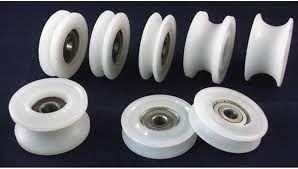
What safety considerations should be kept in mind when using plastic pulleys?
When using plastic pulleys, several safety considerations should be kept in mind to ensure the well-being of operators and the proper functioning of machinery or equipment. Here’s a detailed explanation:
1. Load Capacity:
One important safety consideration is to ensure that the plastic pulleys are selected and designed to handle the anticipated loads and forces in the application. Exceeding the load capacity of the pulleys can lead to premature failure, belt or chain slippage, or even catastrophic accidents. It is essential to consult the manufacturer’s specifications and guidelines to determine the maximum load capacity of the plastic pulleys and ensure they are not overloaded.
2. Material Compatibility:
Consider the compatibility of the plastic pulley material with the surrounding environment and the materials it comes into contact with. Some chemicals, solvents, or extreme temperatures may adversely affect certain types of plastic. Ensure that the chosen plastic material is resistant to the specific chemicals or conditions present in the application to avoid material degradation, weakening, or failure of the pulleys.
3. Proper Installation:
Correct installation of plastic pulleys is crucial for safety. Follow the manufacturer’s instructions and guidelines for proper pulley installation, including mounting options, alignment, and fastening mechanisms. Improperly installed pulleys can lead to misalignment, belt or chain disengagement, excessive vibrations, or other operational issues that compromise safety. Ensure that pulleys are securely attached and aligned to prevent accidents or damage to the machinery or equipment.
4. Guarding and Enclosures:
Consider incorporating appropriate guarding and enclosures around the plastic pulleys to prevent accidental contact with moving parts. This is especially important in conveyor systems or machinery where operators or maintenance personnel may need to interact with the pulleys. Guards and enclosures help prevent injury caused by entanglement, pinching, or getting caught in the rotating components, enhancing overall safety in the work environment.
5. Regular Inspection and Maintenance:
Regular inspection and maintenance of plastic pulleys are essential for identifying any signs of wear, damage, or degradation. Inspect the pulleys periodically to check for cracks, excessive wear, or any other visible issues. Replace any damaged or worn-out pulleys promptly to avoid unexpected failures or accidents. Additionally, follow the manufacturer’s recommendations for lubrication, cleaning, or any other maintenance procedures to ensure the pulleys function optimally and safely.
6. Training and Awareness:
Proper training and awareness among operators and maintenance personnel are essential for safe operation and handling of machinery or equipment with plastic pulleys. Ensure that personnel are trained on the correct procedures for operating, maintaining, and troubleshooting the equipment. They should be aware of the potential hazards associated with plastic pulleys and understand the safety protocols to follow, including lockout/tagout procedures, emergency stop mechanisms, and personal protective equipment requirements.
7. Compliance with Regulations:
Ensure that the use of plastic pulleys complies with relevant safety regulations, standards, and guidelines specific to the industry or region. Different industries may have specific requirements for safety, such as those related to food processing, hazardous environments, or machinery certification. Adhering to these regulations helps ensure that the plastic pulleys and associated machinery or equipment meet the necessary safety standards.
By considering these safety considerations when using plastic pulleys, operators can minimize risks, prevent accidents, and ensure the safe and efficient operation of machinery or equipment in various industrial applications.

What is a plastic pulley, and how does it compare to other types of pulleys?
A plastic pulley is a type of pulley made primarily from plastic materials, such as nylon, polyethylene, or polycarbonate. It is designed to perform similar functions as other types of pulleys but offers distinct advantages and considerations. Here’s a detailed comparison of plastic pulleys with other types of pulleys:
1. Material:
Plastic pulleys are specifically engineered to be lightweight and durable. They are resistant to corrosion, moisture, and many chemicals, making them suitable for various environments. In contrast, other types of pulleys, such as metal pulleys, may be heavier and prone to rust or corrosion without proper protection.
2. Cost:
Plastic pulleys tend to be more cost-effective compared to metal pulleys or pulleys made from other materials like ceramic or glass. The manufacturing process for plastic pulleys is generally less expensive, resulting in lower production costs and, consequently, lower prices for consumers.
3. Noise and Vibration:
Plastic pulleys often provide quieter operation compared to metal pulleys. The inherent damping properties of plastic materials help reduce noise and vibration during pulley rotation. This makes plastic pulleys suitable for applications where noise reduction is desired, such as in household appliances or office equipment.
4. Friction and Wear:
Plastic pulleys generally have lower friction coefficients compared to metal pulleys. This can result in reduced wear and tear on the pulley itself and the associated components, such as belts or ropes. However, it’s important to note that the selection of the appropriate plastic material and design considerations are crucial to ensure sufficient strength and wear resistance for the intended application.
5. Load-Bearing Capacity:
While plastic pulleys can handle moderate loads, they may have lower load-bearing capacities compared to metal pulleys. Metal pulleys, especially those made from robust materials like steel or cast iron, are typically stronger and capable of withstanding higher loads. Therefore, in heavy-duty applications or situations where significant forces are involved, metal pulleys may be preferred.
6. Temperature Resistance:
Plastic pulleys have varying temperature resistance depending on the specific material used. Some plastics can withstand a wide temperature range, while others may have limitations. For example, nylon can handle higher temperatures compared to polyethylene. In contrast, metal pulleys generally have higher temperature resistance, making them suitable for high-temperature environments.
7. Application Specificity:
The choice between plastic pulleys and other types of pulleys often depends on the specific application requirements. Plastic pulleys are commonly used in light to moderate load applications, such as in small appliances, office equipment, or recreational devices. Metal pulleys, on the other hand, are often preferred in heavy-duty applications, industrial machinery, or situations where high strength and durability are paramount.
8. Customization:
Plastic pulleys offer flexibility in terms of design and customization options. They can be easily molded into various shapes and sizes, allowing for specific features or geometries to be incorporated. This makes plastic pulleys suitable for applications where precise customization is required. Metal pulleys may require more extensive machining or manufacturing processes for customization.
In conclusion, plastic pulleys offer unique advantages such as lightweight construction, corrosion resistance, cost-effectiveness, noise reduction, and design flexibility. However, they may have limitations in terms of load-bearing capacity and temperature resistance compared to metal pulleys. The choice between plastic pulleys and other types of pulleys depends on factors such as application requirements, load conditions, environmental considerations, and budget constraints.


editor by CX
2024-04-02
